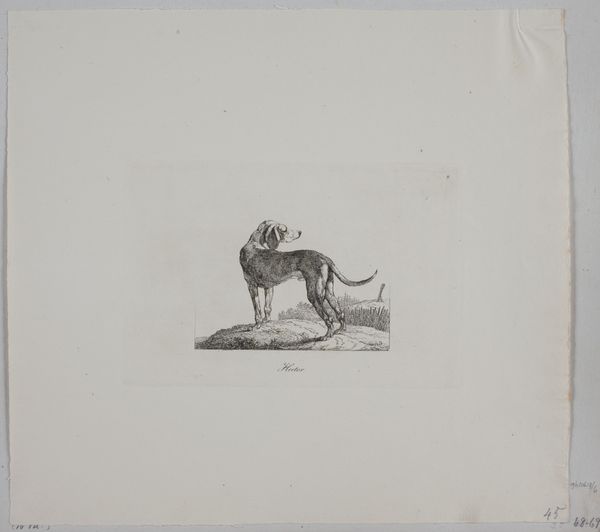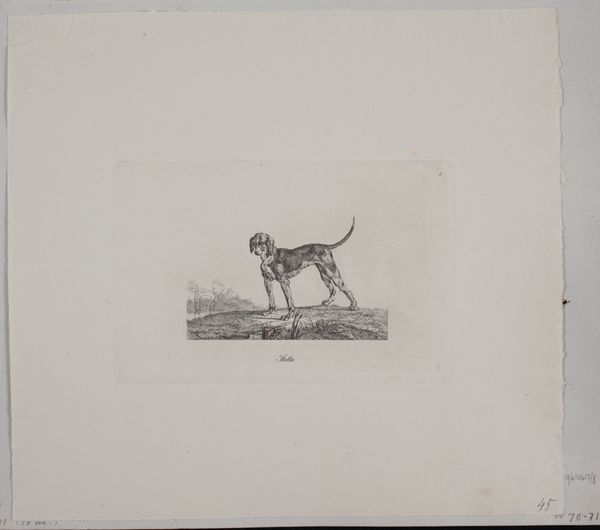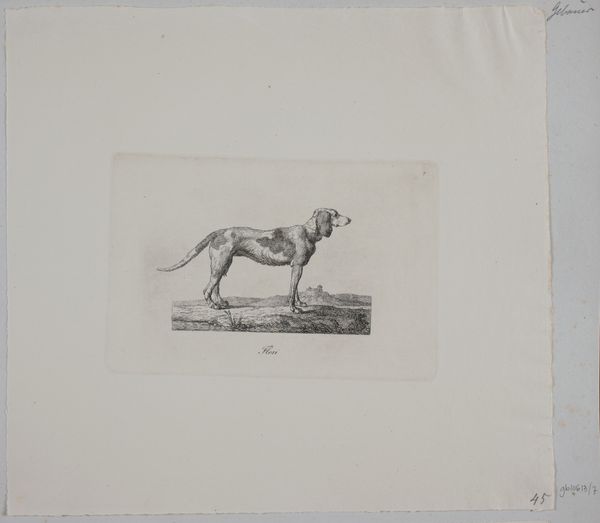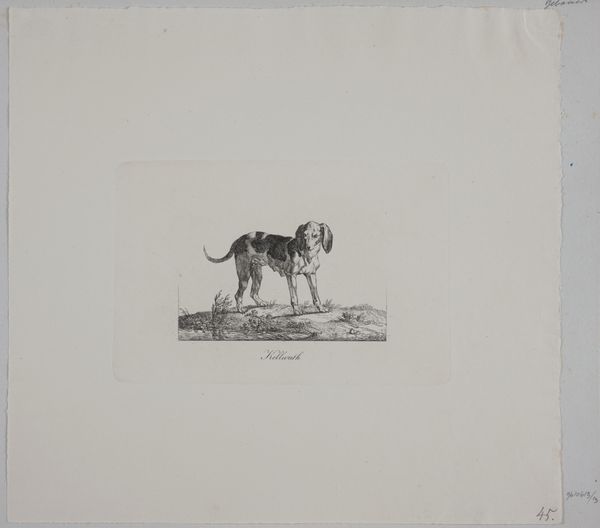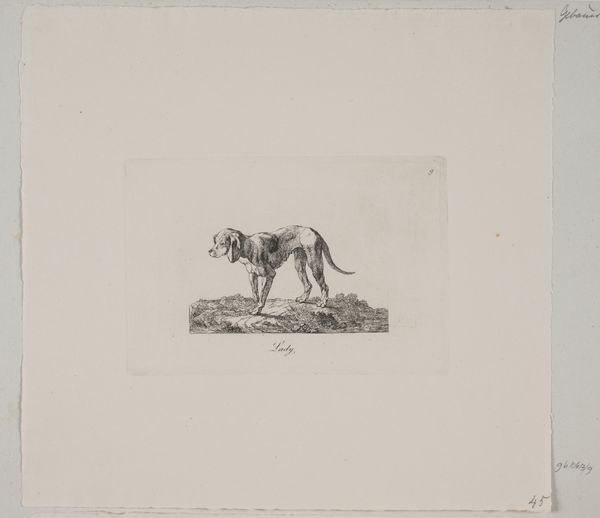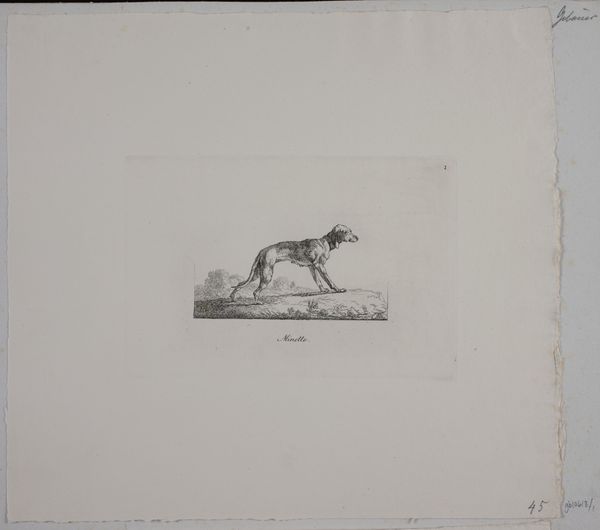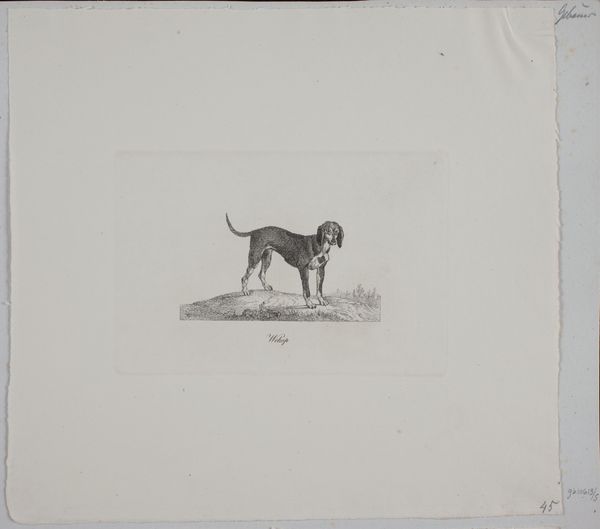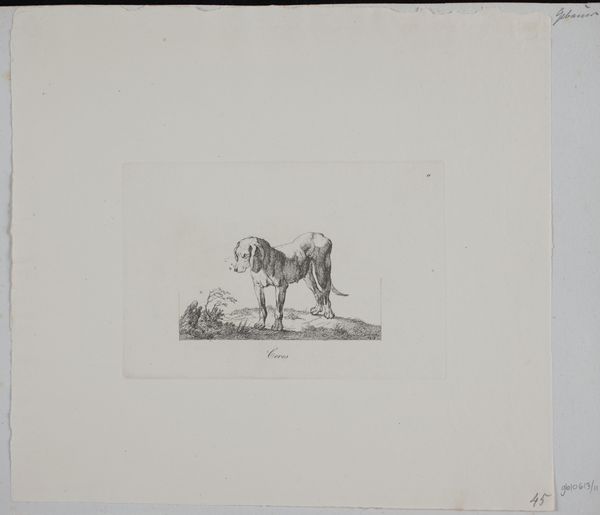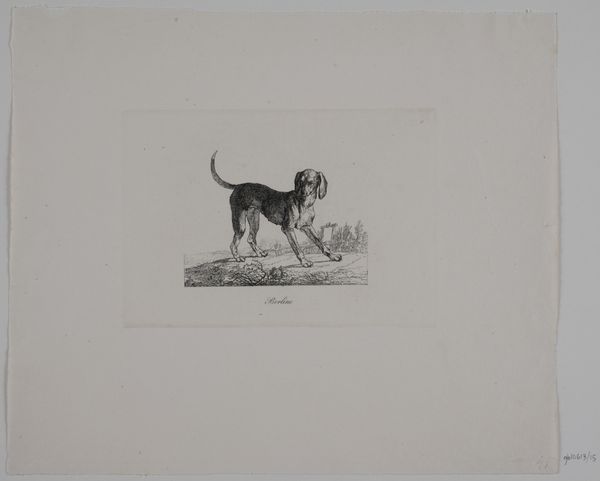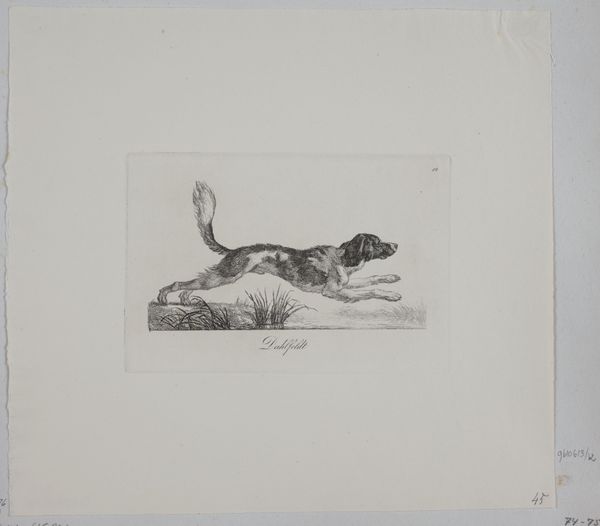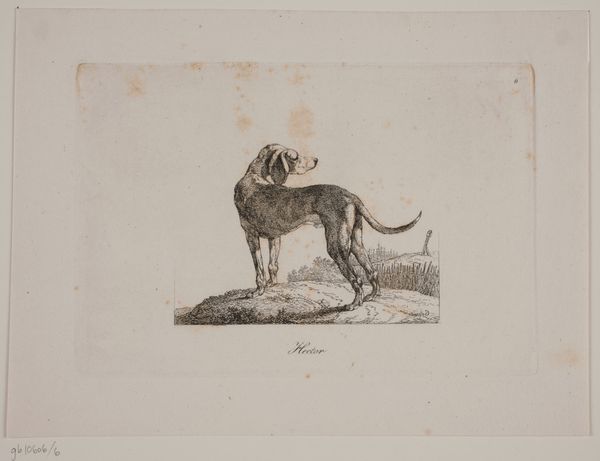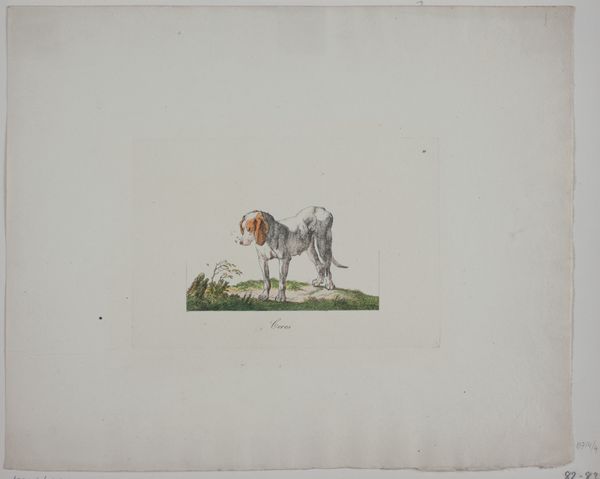
drawing, print, engraving
#
drawing
#
animal
# print
#
line
#
engraving
Dimensions: 110 mm (height) x 162 mm (width) (plademaal)
Editor: Here we have "Tempo", an 1821 engraving by Christian David Gebauer. The linear style creates an almost skeletal dog. It’s fascinating how much expression he achieves with so few lines. What are your thoughts on the use of this particular technique? Curator: I see an engagement with the materials available at the time. Engraving, as a form of printmaking, speaks volumes about accessibility and the reproduction of images. Consider the labor involved, the craft of cutting into the metal plate, the repetitive printing process... How does the industrialization of printmaking potentially shift the role and perception of the artist? Editor: So you're saying that the medium itself democratizes art? Curator: Partly. The material process of engraving, from the craftsman's skill to the mechanics of the printing press, brought images to a wider audience. Before photography, such prints were a vital means of disseminating images and ideas, shaping how people understood the world around them. What statement does the image of a dog make in this context? Editor: Perhaps it comments on domestication and the control of nature. Or, more simply, the expanding middle class, with enough disposable income to own pets and art. Curator: Precisely! We should examine how the image circulates. Where would someone typically encounter such a print? What function did these prints serve within the broader economy of images? Editor: That’s interesting. It’s not just about the artist's intention but the journey of the work itself and how it was distributed and consumed. Curator: Exactly. Thinking about materiality opens up new avenues for interpreting not just the ‘what’ but the ‘how’ and ‘why’ of art's existence.
Comments
No comments
Be the first to comment and join the conversation on the ultimate creative platform.
